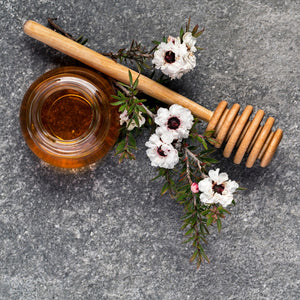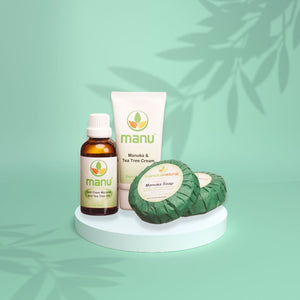
Placenta Cream That Can Really Make a Difference
If you knew it helps would you use ovine placenta cream?
So, would you ever use ovine placenta cream on your skin?
“If the results outweigh the squick factor, sure!” – is the answer we get from many ladies.
Although it looks like it, using ovine (sheep) placenta cream is not a new thing.
However, there is much more than placenta cream reveals. And manufacturers did a poor job of informing you why ovine placenta cream is not another product in the overcrowded cosmetic industry.
But is an ovine placenta just an ingredient that helps the ingredients list look more “fancy”?
The most brutal battle is one against wrinkles
“A woman without beauty is like food without salt,” – wrote one of the ancient Roman philosophers. And for at least eight thousand years, that is, since the ancient Egyptians, a “war” has been waged in the ‘women’s empire’.
It was a war against the external signs of aging.
In the medical-cosmetic industry, which has been developing rapidly since the last century, one of the newer inventions on the market is the natural face-lifting cream.
Although not a new approach, its base consists of ingredients taken from sheep’s placenta. Stars like Jennifer Lopez, Eva Longoria, and Madonna do not hide that they adore them.
Yes, sheep’s placenta-based oils and creams are widely available on the world market.
And how wouldn’t they be?! They are extremely rich in natural vitamins and mineral salts, nourish the skin, increase tissue regeneration and skin absorption.
If we single out one of the scientific explanations, it goes like this: ovine placenta cream provides oxygen to the skin cells in order to increase protein synthesis – to bring you youthful, smooth, and soft skin.
Sheep’s placenta also works on the principle of stimulating collagen in the skin so that proteins from the placenta produce fibroblast cells, which in turn help build collagen and elastin to make the skin firmer.
The effect of rejuvenated skin occurs after three days. After this natural ‘face-lift’, it is claimed that the patients were “delighted with the results they failed to achieve with previous Botox injections.”
It looks like that ovine placenta treatment was kept away as a secret
Placental therapy has promoted the recovery of tissue regeneration since the early 1900s. And it was used by the ancient women in Japan.
Although numerous historical occurrences of placentophagy were practiced in many parts of the world, there was no documentation until the Soviet Union researched in the 1930s.
In the 1930s, Filatov V.P, an ophthalmologist, reported tissues’ accelerated regeneration, thanks to biogenic stimulators found in the placenta.
Since then, placental therapy has been applied in various clinical applications. They exhibited remarkable therapeutic attributes ranging from antioxidant, antimicrobial, anti-inflammatory, hair growth promotion, pain reduction, cellular proliferation, health improvement, tissue regeneration, and wound healing properties.
The placenta (supporting the development of the fetus) is rich in vitamins, amino acids, peptides, trace elements and growth factors, nutrients, and biologically active components.
Also, the placenta is a natural storage center of many biologically active components ranging from amino acids, peptides, enzymes, polydeoxyribonucleotide (PDRN), vitamins, trace elements, growth factors with significant immunomodulatory, anti-inflammatory, and wound healing activities.
You shouldn’t be surprised since it functions as a temporary endocrine gland. It secretes both peptide and steroid hormones to maintain pregnancy, parturition, lactation, and fetal development.
This post further summarizes the cellular mechanism, nutrient content, and therapeutics properties of the ovine placenta.
Ovine placenta cream is a treasure, and here is why (research)
Vitamins, minerals, and trace elements
Young et al. analyzed the minerals and trace elements of encapsulated placental extracts. He discovered the presence of calcium, copper, iron, magnesium, manganese, phosphorus, potassium silicon, sodium, and zinc.
Amino-acids
Amino acids are the symbol of critical nutrients at any age. Types of essential and non-essential amino acids present in the placenta include alanine, aspartic acid, arginine, histidine, leucine, lysine, phenylalanine, proline, tyrosine, tryptophan, valine.
These amino acids stimulate the most common type of cell found in connective tissue (fibroblasts production), collagen production, and they decrease skin pigmentation.
Extracellular matrix components
The extracellular matrix (ECM), present within all tissues and organs, is the most significant component in the placenta – but also in the skin. It provides the biochemical network and structural integrity to all surrounding cells.
It is made up of:
collagens,
proteoglycans (a protein that supports connective tissue)
glycosaminoglycans (support the health maintenance of skin proteins),
elastin,
fibronectin (plays vital roles during tissue repair)
laminins (support skin’s membrane and its base)
Cytokines and growth factors
Placental extracts are rich in growth factors G-CSF, GM-CSF, EGF, FGF, HGF, IGF, PDGF, TGF, and VEGF, which show various physiological effects ranging from immunomodulation, anti-inflammatory, wound healing, cellular proliferation, and regeneration.
Anti-inflammatory and antioxidant properties
The previous investigation on placental extracts shows that ovine placenta cream could significantly reduce nitrite-induced oxidative damage (free radicals). As you know, free radicals are one of the leading causes of premature aging of the face and the appearance of wrinkles.
In addition, it stimulates the skin’s natural fight against wrinkles, revitalizing the skin, and strengthening the skin’s immune system.
The skin is an immunologic organ. It is estimated 20 billion T cells in human skin — far higher than the number of T cells in the blood — suggesting that immune defense in the skin is higher than we thought. (1)
The choice of sheep (KNOW THE SOURCE OF CELLS IN YOUR BEAUTY PRODUCTS)
If you had this kind of mental pic in your head, forget it!
Sheep placenta is mainly sourced from Australia. It comes from high-quality animal sources such as sheep that have successfully given birth.
The discarded placenta is harvested, purified, and processed into a skin-compatible product. As a result, the ovine placenta has the characteristics of high purity, high quality, and high safety.
By using the fermentation process placenta preserves the nutrients.
As a source, a placenta is justified by high safety standards the absence of cultural and religious taboos against this species. And in like manner, it’s of extraordinary nutritious qualities.
“Placenta” you see in the ingredient lists is nothing else than a placental protein ‘take out.’ Nothing gross in it. Just pure protein.
Anyway, most Japanese products use placental proteins from animal sources.
Plant placenta vs. animal placenta
I already named what animal (ovine) placenta brings to your skin.
Now, what about plant sources?
The term plant placenta was forged by the director of Sicobel (French cosmetical house). Thanks to their historical know-how in natural and organic brands, they’ve been around for 60 years. However, sometime around the beginning of the 1990s, there was a significant turnaround in the cosmetic industry thanks to the ‘green plan’ or ‘green agenda,’ if you will.
There was a mission to reduce environmental impact in this industry and make plant placenta more accessible to as many people as possible in the field of beauty, well-being, and health.
Bernard Guillot, who had become the R&D Director of Sicobel, was highly in love with plants. As he read, he found pieces of literature on what British and French botanists called “placental beam.” It was a substance found under plant pistils.
This concept will return in the 2000s with extracts wrongly called “plant stem cells.”
Nevertheless, tested with several methods, it showed high capabilities in terms of physical stimulation (increased oxygen consumption) and Transepidermal Water Loss (TEWL) regulation.
There are two major benefits of herbal placenta. One involves the fact that our skin cells are currently recognizing and accepting it. It, therefore, has a unique ability to penetrate deeper layers of the skin, where the damage actually occurs.
Another significant benefit is that the plant placenta helps coordinate the different activities of individual skin cells to maximize the healing properties of clinically proven anti-age peptides, antioxidants, vitamins, and botanical ingredients. The strength of the plantar placenta is most visible when it comes to healing wounds, including scratches on the skin, bruises, redness, irritation, and burns.
So, to my knowledge, placenta and collagen can only come from animal byproducts.
What I believe companies touch on when they mean “plant collagen” or “plant placenta” is a bunch of amino acids that are similar in composition to the ones found in placenta and collagen.
But that is just my source of info. Maybe you may prove me wrong?
But, what would amuse me more is to tell me your observations after using both.
Ovine placenta face cream (nature’s beauty nz)
Whether you decide on plant or ovine placenta cream, I think you have to know your skin.
New Life – Sheep Placenta Face cream with Manuka honey contains hormone-free sheep placenta extract and Manuka UMF honey. Also, it includes a unique blend of natural plant oils and extracts. Super creamy and rich.
The ovine placenta face cream is a quick solution to the whole spectrum of problems related to skin aging: correction of the cheeks, smoothing of wrinkles, and restoring skin elasticity.
It contains active ingredients of plant origin, which increase skin elasticity, provide protection and renewal of collagen and elastin fibers, and improve skin tone. In addition, the cream provides long-lasting hydration of the skin, smoothes wrinkles, and has a prolonged lifting effect.
You can apply it to the face, neck, and body in the morning and before bed, with light rubbing. It suits all skin types in women and men. It is light, goes on smooth, and smells good, not a heavy scent.
Some say that the oil has a “very seductive smell,” so it is unnecessary to put perfume after it. But, whatever the case with your experience, we must warn you not to slip it in your eyes.
Within the first week, you may see a different texture on your face. And get this… “even the sound of the washcloth or cotton ball was different as they kind of slid cause of the smoothness.”
I am not joking… Ladies are reporting all the time insightful and startling experiences.
In the end …
Did you know that in the Victorian era, well-going English women slept with pieces of raw beef on their faces to reduce facial wrinkles?
Today fans of innovations can resort to many treatments at reasonable prices. So you may bit the bullet and put a new fad on your face, and your skin may love you for it?!
And who knows, you may like what Sheep Placenta Face cream with Manuka honey has to offer?!
However, if not, there is one thing that I like to keep in mind:
A sense of humor & wrinkles is much better than a smooth-faced and narcissistic companion.
Have a good one!
ORIGINALLY PUBLISHED on blog.manukanatural.com


